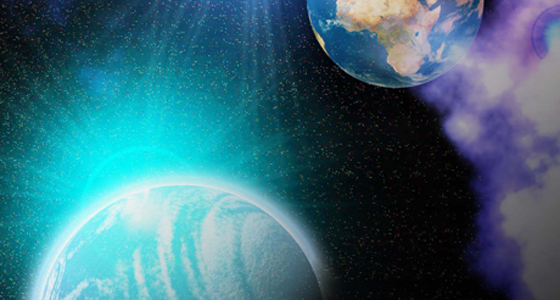To boldly go where no man has gone before…
Depending on how broad a definition is used, one may argue that the ideas of science fiction (sf) are as old as human storytelling. Tales of travelling to the stars can for example be found among poets of the Classic era (Lucian’s True History of 2nd century origin), while visions of a better world were especially popular during the Renaissance (Thomas More’s Utopia of 1516 naming that related genre). Most histories of science fiction will start their account with the Enlightenment though. Sometime in the 19th century, the supernatural gave way to technological progress and human reason as main motivator for change in the human condition. James Gunn calls sf the “literature of change” and the “literature of the human species” (vii) [1] because sf does not concern itself with continuity and stability (with the past), but rather with progress and ever-new situations that human beings find themselves in (thus, with the present and the future). Technological inventions have had significant impact on our thinking and our lives and it is thanks to science fiction that we have a cultural signifier for these changes. When Mary Shelley first heard of Luigi Galvani and his dead but yet seemingly alive frogs she felt compelled to extrapolate his experiments. She thus wrote what is today one of the most profound visions of science gone wrong and probably the first instance of a distinguishable sf: Frankenstein. When H.G. Wells thought about the state of the British Empire and the many colonial conflicts it was in, he could not but imagine the “what if” we were the colonized and ended up writing War of Worlds.
But science fiction as we have come to know it is an American invention and came to pass in the pulp magazines of the 1920s and 30s, evolving from scientifically inspired adventure stories for young boys into a full fledged genre by the 1940s. The grand masters of that time, Isaac Asimov, Arthur C. Clark, Robert Heinlein and Frederik Pohl took their audience on voyages to galaxies far away, presented them with technological wonders like robots, laser guns and rocket ships, and met with many an alien life form walking on strange worlds. The genre soon developed further, branching out from literature to film and television. Hollywood became interested in the possibilities of sf and produced an incredible amount of b-movies with mutants from outer space, invasions from Mars, and technologically created monsters like the Incredible Shrinking Man, the 50 Foot Woman or the Human Fly.
But sf is by far more than pulp tales or b-movies with outrageous stories and low quality. Over the last century, it has also produced such intellectually challenging and highly aesthetic works of art as Fritz Lang’s silent movie Metropolis (1927), Stanley Kubrick’s avant-garde film 2001 – A Space Odyssey (1968, based on a story by Arthur C. Clark), Philip K. Dick’s alternate-history novel Man in the High Castle (1962) and William Gibson’s ground-breaking novel Neuromancer (1984). But these films and novels do not just adhere to a higher quality standard than sf is usually credited with, they have also manifested an undeniable impact on our culture. Gibson was the first to coin the term “cyberspace” and described in detail the possibilities of hacking. And the design of popular flip-phones seems oddly reminiscent of the 40 years old design of Star Trek’s famous ‘communicators’. Not to mention the frightening similarities of George Orwell’s double-speak to today’s political lingo, of Bradbury’s video-walls to flat screen TVs and Huxley’s Soma to drugs like Prozac or Ritalin. Science fiction is not just entertainment and escape to another world – in its best form it is prophetic warning of wrong turns ahead and a roadmap to a better world all at once.
[1] Gunn, James. “Introduction.” The Road to Science Fiction Vol. 1: From Gilgamesh to Wells. Ed. James Gunn. Lanham: Scarecrow, 2002: vii-xviii.
Dieser Artikel erschien als Ankündigung für die Vorlesungsreihe “A Virtual Introduction to Science Fiction” im Allgemeinen Vorlesungswesen der Stadt Hamburg und ist hier als PDF-File erhältlich.
